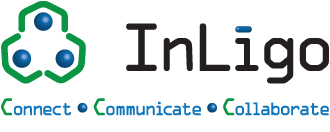
Navigating the Future of Mobile Device Management
Latest Trends and Challenges
As the world becomes increasingly mobile-centric, the need for effective Mobile Device Management (MDM) solutions has never been more critical. From smartphones and tablets to wearables and IoT devices, mobile devices have become the primary means of communication and productivity for individuals and organizations alike. Microsoft MDM, with its comprehensive suite of tools and features, has emerged as a leading solution in the fast-evolving landscape of mobile device management. In this article, we will explore the latest trends and challenges in MDM and how Microsoft MDM is addressing them to enable organizations to navigate the future with confidence.
WHAT IS YOUR SECURITY SCORE?
Trend #1:
The Proliferation of Diverse Devices
With the growing diversity of devices, organizations now face the challenge of managing a multitude of endpoints with varying operating systems, form factors, and capabilities. From iOS and Android to Windows and macOS, IT teams need to ensure that these devices are secure, compliant, and optimized for productivity. Microsoft MDM provides a unified approach to manage diverse devices through its Intune platform, which allows organizations to seamlessly manage devices across different operating systems and enable a consistent experience for end-users. With support for both company-owned and BYOD (Bring Your Own Device) scenarios, Microsoft MDM empowers organizations to embrace device diversity without compromising security or productivity.
Trend #2:
The Growing Importance of Security
Security remains a top concern for organizations as mobile devices are increasingly used to access sensitive corporate data and resources. With the proliferation of mobile threats such as malware, ransomware, and phishing attacks, IT teams need robust security measures to protect their devices, apps, and data. Microsoft MDM offers a comprehensive set of security features, including device enrollment and configuration, app protection policies, conditional access, and threat intelligence, to ensure that devices and data are secured at all times. Leveraging Microsoft’s expertise in security, organizations can confidently mitigate risks and safeguard their mobile endpoints with Microsoft MDM.
Trend #3:
The Shift to Cloud-based Management
As organizations embrace cloud computing, there is a growing trend towards cloud-based MDM solutions. Cloud-based MDM offers several advantages, including scalability, flexibility, and ease of management, as organizations can leverage the power of the cloud to centrally manage devices, apps, and data from anywhere, at any time. Microsoft MDM is a cloud-first solution that provides a seamless and scalable approach to manage mobile devices, apps, and data through the cloud-based Intune platform. With its integration with other Microsoft cloud services such as Azure Active Directory and Microsoft Endpoint Manager, organizations can benefit from a unified and cohesive management experience, enabling them to efficiently manage their mobile endpoints in the cloud.
Challenge #1:
Balancing Security and User Experience
One of the challenges in MDM is finding the right balance between security and user experience. IT teams need to enforce security policies and controls without hindering end-users’ productivity or experience. Microsoft MDM addresses this challenge through its conditional access and app protection policies, which allow organizations to define granular security policies based on user, device, app, and location, while enabling a seamless user experience. For example, organizations can enforce multi-factor authentication for accessing corporate resources while allowing users to access personal apps and data without any disruptions. This balance between security and user experience is crucial in ensuring that organizations can maximize productivity without compromising security.
Challenge #2:
Managing Privacy and Compliance
As organizations handle sensitive data on mobile devices, compliance with privacy regulations such as GDPR and HIPAA becomes critical. IT teams need to ensure that mobile devices and apps are compliant with privacy regulations and corporate policies. Microsoft MDM offers features such as data loss prevention (DLP), encryption, and compliance policies to help organizations meet their privacy and compliance requirements. For example, organizations can use Microsoft MDM to configure app-level encryption for sensitive data, set up DLP policies to prevent data leaks, and enforce compliance policies to ensure that devices are compliant with corporate policies and regulatory requirements. Microsoft MDM also provides comprehensive reporting and auditing capabilities, allowing organizations to track and monitor compliance status, identify potential risks, and take necessary actions to maintain compliance.
Challenge #3:
Keeping Up with Rapid Technological Advancements
The landscape of mobile devices and technologies is constantly evolving, and IT teams need to stay updated with the latest advancements to effectively manage and secure mobile devices. From 5G connectivity and edge computing to the Internet of Things (IoT) and artificial intelligence (AI), new technologies are transforming the mobile landscape and introducing new challenges and opportunities. Microsoft MDM is designed to keep up with these rapid technological advancements, with regular updates and feature enhancements that leverage the latest technologies. For example, Microsoft MDM offers features such as 5G-aware data usage policies, IoT device management, and AI-powered threat detection to enable organizations to stay ahead of the curve and manage mobile devices in the era of digital transformation.
Conclusion
Mobile Device Management (MDM) is a critical aspect of modern IT management, and organizations need to be aware of the latest trends and challenges to effectively manage and secure their mobile devices. Microsoft MDM, with its comprehensive suite of tools, features, and cloud-based approach, offers a robust solution for organizations to manage diverse devices, enforce security policies, maintain compliance, and keep up with rapid technological advancements. By leveraging Microsoft MDM, organizations can confidently navigate the future of mobile device management and empower their workforce to be productive, secure, and compliant in the mobile-first world.
As the mobile landscape continues to evolve, organizations need to stay vigilant and proactive in managing their mobile devices. With Microsoft MDM, organizations can embrace the latest trends, overcome challenges, and unlock the full potential of mobile devices in today’s digital world. Are you ready to take your mobile device management to the next level with Microsoft MDM? Let’s connect and discuss how Microsoft MDM can empower your organization to thrive in the mobile-first era.

